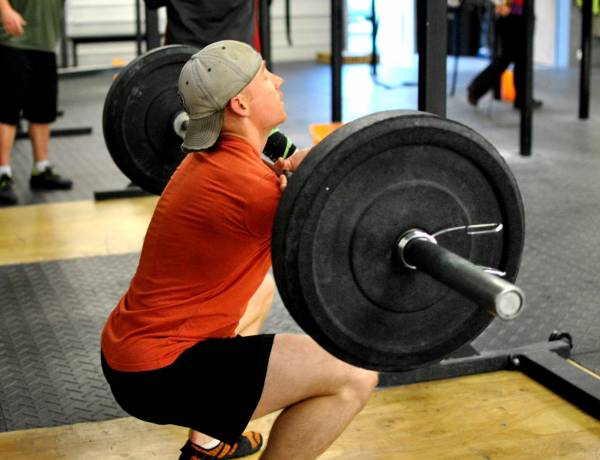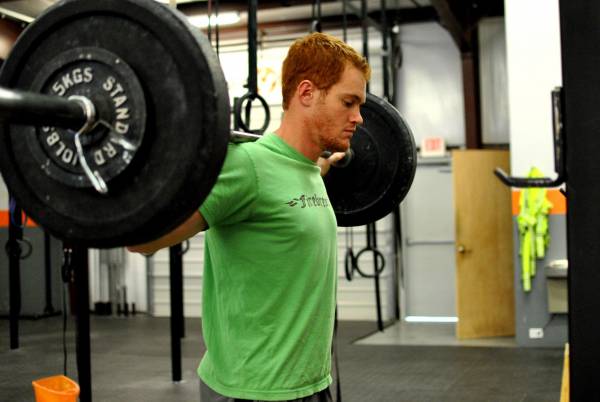In the small and dark basement gym where I trained in Olympic weightlifting, I once saw one of the international level lifters stop his snatches and cleans and move solely to squatting for a number of weeks. I asked what he was doing. I was told simply, “The Russian Squat Routine.” I watched as session by session he added to his already impressive strength using this routine. I asked for more details, and a week or two later was handed a brown envelope. In it was a barely legible, badly photocopied version of the Russian Squat Routine. That set the tone perfectly for me. I gave it a go and fell in love with it – from Russia with love. Six weeks of squatting three days a week: the first three weeks systematically building the volume, followed by three weeks of tapering down the volume whilst ramping up the intensity to a max.
Since that time I also became familiar with another Russian strength method, the Smolov Squat Routine. This routine was originally developed by Sergey Smolov, the Russian Master of Sports. It hit popularity in 2001, when published by Pavel Tsatsouline in an issue of Powerlifting USA, and has come to the attention of many since then. The Smolov involves thirteen weeks of squatting, broken down into four specific cycles. After a short introductory microcycle to get the legs ready for what is to come, there is a four week, four times a week base mesocycle, at the end of which should follow a new max. After a two week switching cycle comes an intense mesocycle, very heavy squatting three times a week based on the new max, which should increase once again at the end of it all.
I have accumulated very good experience of both programs, both personally and through my clients. So, in this article I’m going to compare the two programs and provide a little advice on how to approach each of them for maximum gains. As a strength coach, I often get asked how to add kilos onto a squat. Almost always, my answer (only half tongue-in-cheek) is to “squat more.”
Before embarking on a special squat program, I need to know that you have been squatting both frequently and regularly, adding weight each session. This is essentially linear progression. If your weights have plateaued, this is not a cue to jump straight into a squat program. Rather, take a short time to deload, and start the cycle again. Repeat this loop until you truly find that your gains are levelling out.
I am a firm believer in keeping training protocols as simple as possible. I believe that whilst these squat programs will elicit gains in beginners, the truth is that almost anything will, and it is best to save the specialist squat programs for when they can help to boost your training to the next level.
But approach with caution – these routines are not easy fixes. In fact, they are brutal.
Both the RSR and Smolov can be used for either back or front squat and have been used by Olympic lifters, strongmen, and powerlifters. Let’s take a look at a few different ways in which these programs compare:
Recovery:
 From day-to-day, the RSR allows for more recovery due to the 6×2 “recovery sessions” that are incorporated every other workout. These will probably not feel like recovery sessions at the start of the program, but as it progresses, they should start to feel better. With Smolov, the day-to-day sessions leave little room for recovery within, them but the program does incorporate a two week “switching cycle” between the base cycle and the intense cycle – a well-needed mental and physical change of pace.
From day-to-day, the RSR allows for more recovery due to the 6×2 “recovery sessions” that are incorporated every other workout. These will probably not feel like recovery sessions at the start of the program, but as it progresses, they should start to feel better. With Smolov, the day-to-day sessions leave little room for recovery within, them but the program does incorporate a two week “switching cycle” between the base cycle and the intense cycle – a well-needed mental and physical change of pace.
Intensity and Volume:
If taking intensity in this context to mean the percentage of your 1RM, Smolov tips the scales, particularly during the Intense mesocycle (funnily enough), where you are hitting over 90% of your 1RM most days – the volume of reps at this intensity is also higher than the RSR. In terms of volume of days per week, the RSR sticks at three days a week throughout whereas Smolov includes four days of work during the Base Cycle. This drops to three days during the Intense Cycle, thankfully!
Other Training:
The RSR is a little more forgiving in terms of schedule. Firstly, it is three times a week throughout, which allows a small window to get in some other training, even if the squats are taking their toll. Secondly, every other session is a “recovery” session, which allows for scheduling of additional work. Be careful though, you will want to steer clear of anything that is leg or lower back intensive.
Variety:
 I love squat programs, though they are certainly not fun in the traditional sense, and they are not meant to be. They are a means to an end, and a tough way of getting there. In this way, variety should not be a major issue in terms of enjoyment, as you simply need to do what the numbers tell you to do, no matter how monotonous. Having said that, the Smolov Base cycle works sets of 9, 7, 5 and 3 reps – very different in terms of how they feel, and how you feel after them. The different cycles keep things pretty fresh too. The intense cycle is also less predictable than the Russian Squat Routine.
I love squat programs, though they are certainly not fun in the traditional sense, and they are not meant to be. They are a means to an end, and a tough way of getting there. In this way, variety should not be a major issue in terms of enjoyment, as you simply need to do what the numbers tell you to do, no matter how monotonous. Having said that, the Smolov Base cycle works sets of 9, 7, 5 and 3 reps – very different in terms of how they feel, and how you feel after them. The different cycles keep things pretty fresh too. The intense cycle is also less predictable than the Russian Squat Routine.
Time vs. Benefit:
As mentioned previously, it would be foolish to think of these programs as easy gains. There is no notion of “something for nothing” here. They work if you do. However, it is understandable to want to keep the time span of the program short, if only to be able to go back to normal training again. However, as with everything in life, you get in what you put out. The Smolov cycle builds on itself systematically and of course this sets you up for bigger gains. I have added as much as 15kg on the Russian Squat Routine and 25kg on Smolov (10kg on the base cycle, and 15kg on the intense cycle).
These programs are meant to be used as variation to your standard programming. They are not designed to be a long-term basis for your strength program. Use them sparingly, and choose the one that fits with your long-term athletic development in regards to the above factors – recovery, intensity, volume, variety, other training, and time versus benefit.
Once you have decided, here are my top three tips for success in your chosen program:
Numbers – Choose your “max” carefully. The idea behind these programs is that you complete them as prescribed. Missing reps all over the place would not help with your progression through these programs, and thus jeopardize your ultimate gain. This means striking the fine line between making sure the reps are achievable, and pushing yourself to your limit (and beyond). One way to do this is by using what I call your “everyday max” – i.e. the max on that lift that you can hit on any given day, not the one that you hit back in the day.
 Focus – Whichever squat program you choose, make it your focus for those number of weeks. If you need to do additional training during those weeks, then do so. I advise my clients to stick to upper body only, or at least movements that will not interfere with the squat sessions. I have seen others continue to train as normal whilst “adding in” one of the squat routines, and virtually every time, something gives – the training, the squats, or worst of all, the body.
Focus – Whichever squat program you choose, make it your focus for those number of weeks. If you need to do additional training during those weeks, then do so. I advise my clients to stick to upper body only, or at least movements that will not interfere with the squat sessions. I have seen others continue to train as normal whilst “adding in” one of the squat routines, and virtually every time, something gives – the training, the squats, or worst of all, the body.
Recovery – Following on from the last point, do everything in your power to recover as best you can for your next session. Eat big. Sleep well. Mobilize. Give yourself enough rest in between each session to be ready to hit the next one as close to full physical capacity as possible. This also applies to recovery in between sets – take your time, the idea here is to complete the lifts, not do more work in less time.
Make no mistake about it – these are very hard routines. Commit to completing every rep of every set of every session. It goes without saying that you should not miss sessions – believe me, you will want to. If you have set the numbers suitably, these squats will give you sleepless nights, restless days, and strike fear into you each time you walk back up to the bar. But somehow, you will get them done. And it will be worth it.
Photos courtesy of CrossFit Impulse.






